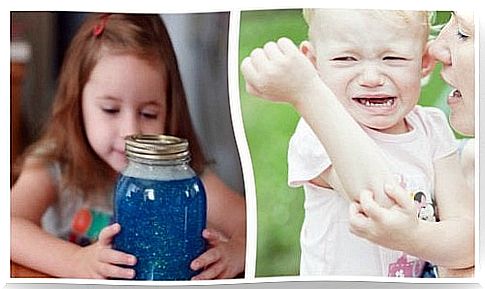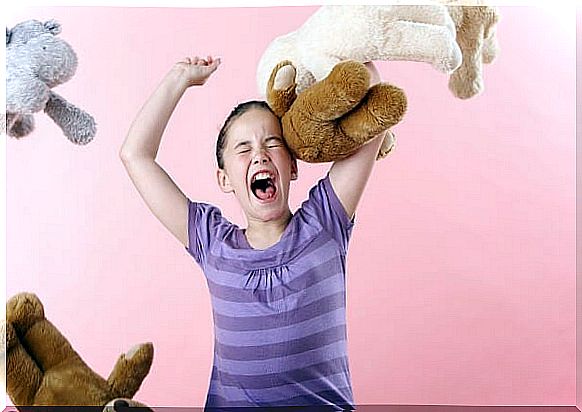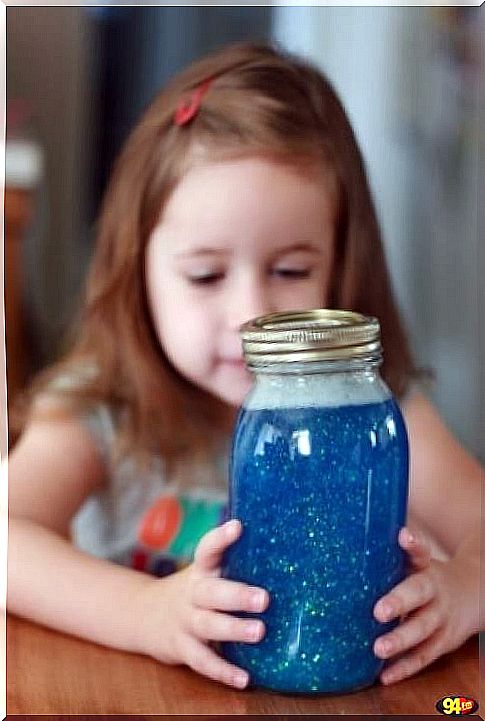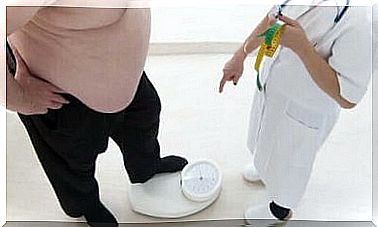Montessori Techniques That Can Help Deal With Your Child’s Anger

While it is true that Montessori techniques have been admired as much as they have been criticized. There is still an interesting topic that we can use in the classroom as well as at home and in the daily education of our children.
Today we are going to talk about angry and furious outbursts that young children show, which are so complicated for us to channel, control and understand.
One of the most useful concepts that Maria Montessori gave us was sensitive periods. Children, from the moment they are born until they are 6 years old, experience what are known as “windows of opportunity”.
These windows of opportunity are moments when children have innate abilities to learn and acquire certain skills and abilities. This is the best time to teach them how to deal with and understand the complex, emotional world that sometimes overwhelms them.
Today, here on our website, we are going to give you some simple Montessori techniques on how to deal with some of the emotional states of your child.
Montessori techniques for dealing with tantrums and anger in children
We all know more or less what kind of teaching takes place in kindergartens that use Montessori techniques. Basically, these kindergartens put the child’s autonomy first. This focuses mainly on how the child is responsible for their own learning. By exploring their curiosity and interaction with all that the child’s environment can provide.
But many mothers and fathers ask themselves how Montessori pedagogy can help them in a denser and more primary environment, such as at home. Ultimately, a child’s home is an immediate environment where it can get the most basic educational tools.
Let’s look at some advice we can think of, which will help parents channel the angry moments that children may have.

Socio-emotional education
Maria Montessori never spoke “only” about emotional intelligence. According to the famous teacher, emotions and socialization go hand in hand.
When a child has a temper tantrum, what he feels is nothing more than the inability of the social environment to adapt to the child’s experiences. Specific examples are:
- The child can not get what he wants, he feels offended, annoyed by something or someone or unable to wait for a reward… This translates into tears, screams and kicks.
- Emotions come to the surface in this socio-emotive context of the child during interaction with adults or other children. And this results in the child not being able to separate things from each other.
- Despite the fact that some have criticized the Montessori method of offering children this so-called freedom and independence. Can we not forget something basic:
- The adult is the guide, the adult provides the opportunity for learning. And above all, the adult is a model that the child imitates and follows.
- These sensitive periods, which are understood to occur between birth and 6 years of age. Is an important milestone that children go through, so that parents are there to answer all questions and give attention to every emotion.
Aspects that we must consider in order to channel our children’s emotional world
- According to Montessori techniques, you should not ignore a single word or part of your child’s behavior. Nor do you compare them to anyone else. These actions will make them angrier.
- Make sure your child feels safe at all times. For example, you should make sure that they feel comfortable talking to you, confident in daring to discover the world. And talk to other children, play with other children with respect, put your trust in people and create things.
- Allow the child to make mistakes. Offer them advice, but allow them to resolve their mistakes on their own. Children need to do things all by themselves to feel able to increase their self-confidence.
- When a child gets angry, this means that there is something that the child does not know how to express. Alternatively, this may also mean that there are some aspects of something in its environment that we need to know about and understand.
- That is why it is important that we as parents guide our children with calm and patience. Never overlook these outbursts of elation, especially if they are small. It is necessary to trace their origins and provide strategies to combat them.
Soothing bottles
In the last couple of years, so-called “soothing bottles” have become very popular. And is used to relieve stress and anxiety in children. But it is important to clarify what the purpose is and how to use them.

- A soothing bottle is a visual stimulus that children center their attention on for a little while, thanks to the movement of glitter inside the bottle.
- A child must always use this in the company of an adult.
- For example, a child may take a soothing bottle to bed every day. While the child observes and moves on it, you can ask the child how their day was, or what worries them, what makes them scared, what they like and dislike, for example.
- You should ask these questions correctly, without judging the child, and also without asking it directly. Instead, the questions you create for your child will be part of a game that promotes its emotional outlet.
Soothing bottles are simple resources that can greatly help us as parents, and they can be easily made at home.









